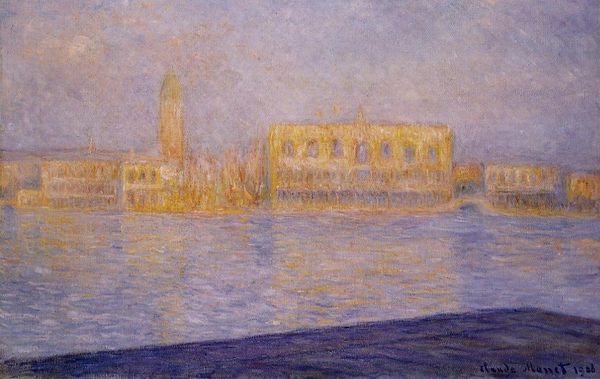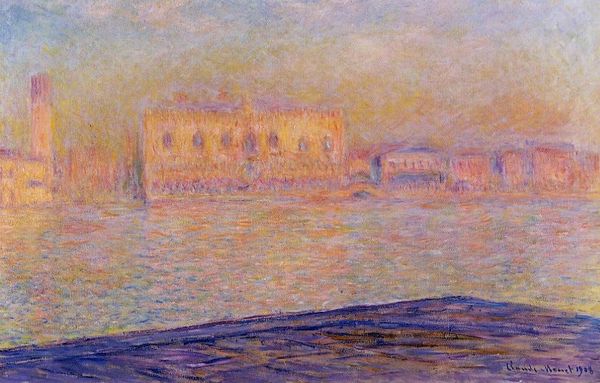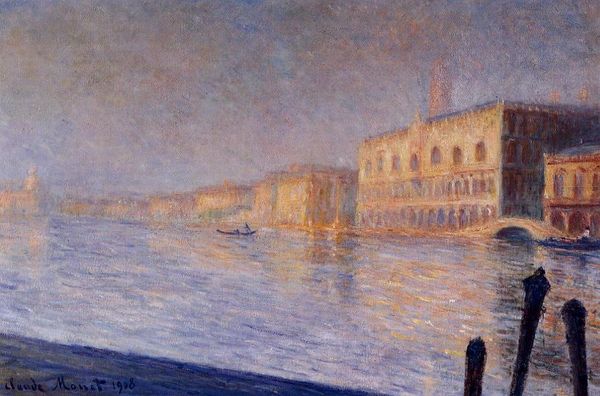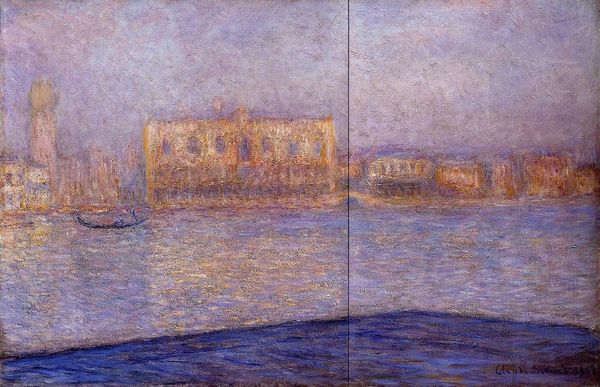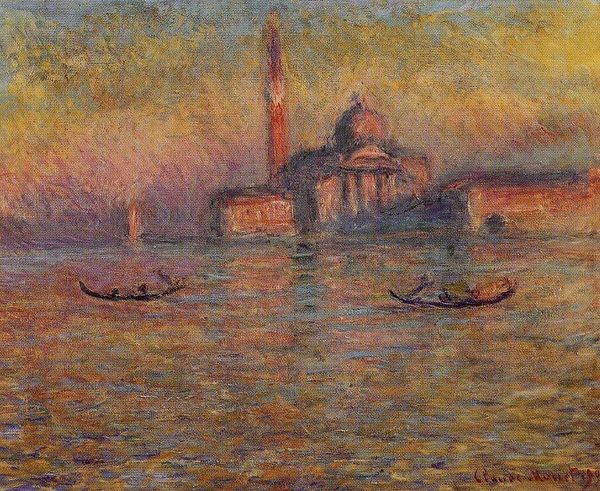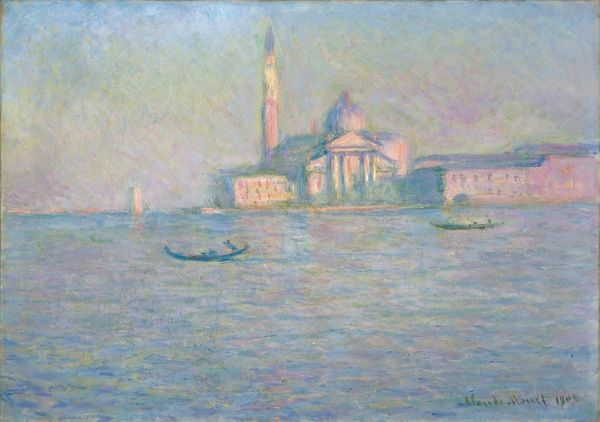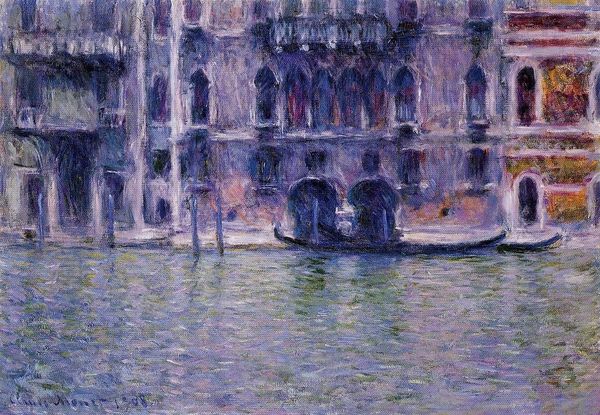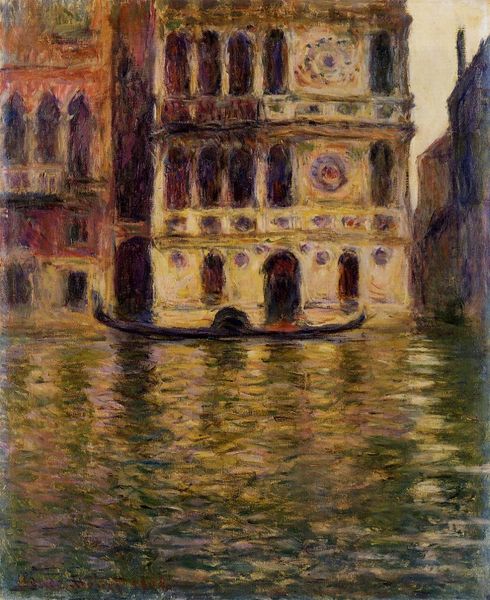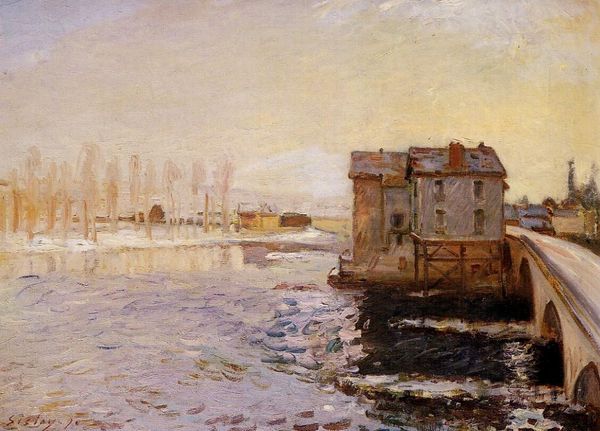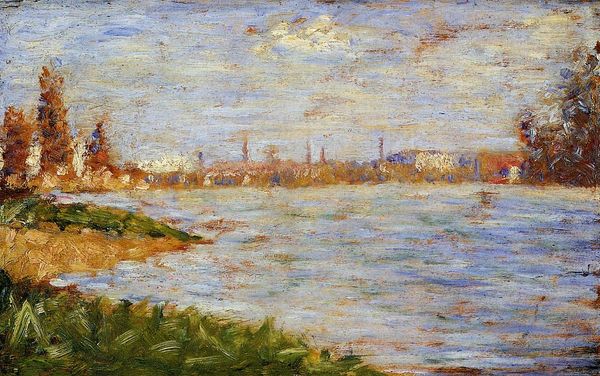
Copyright: Public domain
Curator: Today, we're looking at Claude Monet's "The Doges' Palace Seen from San Giorgio Maggiore 4," an oil on canvas he completed in 1908 during one of his visits to Venice. Editor: It's...hazy. Almost dreamlike. The light feels filtered, muted, and the colours seem to bleed into one another. I notice an emphasis on the building's reflections and their fragmented nature. Curator: Indeed, Monet was intensely interested in capturing the fleeting effects of light and atmosphere. Think about the physicality of oil paint here: strokes applied alla prima, blurring the forms. Notice that there are a few gondolas in the image. Editor: The Doge's Palace always struck me as a potent symbol of Venetian power and prestige. Monet reduces it here, though, blurring the symbols of the doge and softening the architecture to such an extent it seems like it is fading into memory. Even the surface of the water reflects this notion: not quite liquid, more like glass... still and brittle, and a thin veil hiding secrets beneath it. Curator: Good observation! What is more, this ties into the context of his work at the time. It shows his mastery in the Impressionistic approach. This involved rapidly applying small strokes to accurately and quickly catch the atmospheric nuances, it's about how industrialization shaped leisure. Editor: I wonder about Venice itself becoming this subject of myth... a city floating in time. Even the haze contributes to that feeling. There's a melancholy feeling and you have the symbol of authority gently reflected by an oily slick of polluted water. Monet understood. Curator: The work demonstrates Monet's obsession with recording reality through color and process. It really encapsulates the social values. Editor: For me, it's about Venice becoming this emblem, caught between glory and fragility. Thanks to symbols.
Comments
No comments
Be the first to comment and join the conversation on the ultimate creative platform.
